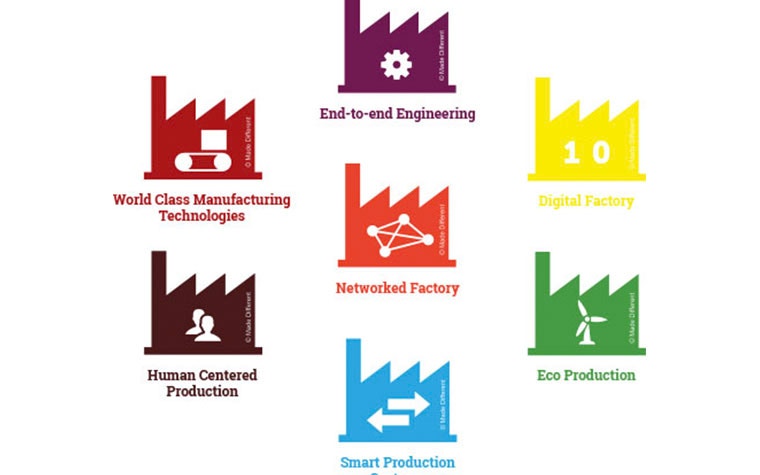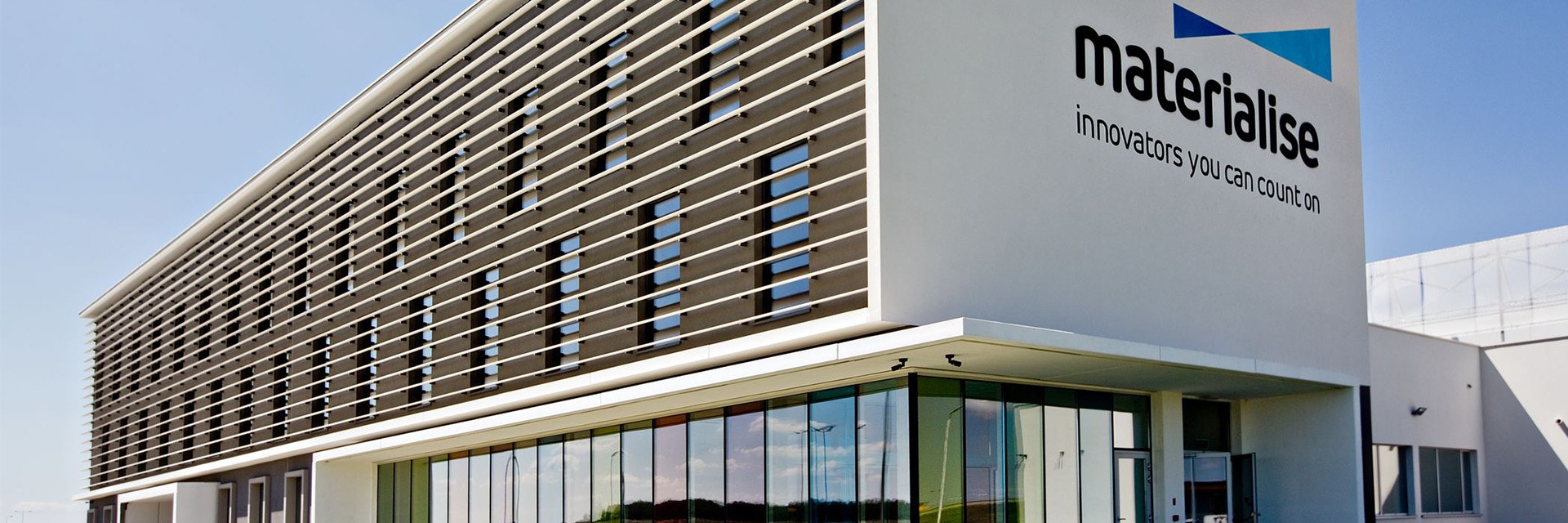EXPERT INSIGHT
The Future is…Industry 4.0

Industry 4.0 is the hot new buzzword in manufacturing, but it isn’t always clear what it means and the magnitude of the transformations it can bring. Despite its obvious connection to computational systems, Industry 4.0 is more than simply the digitization of manufacturing. A little less than a decade ago, the idea of a fourth industrial revolution started to take shape as factories began to integrate digital and robotic technologies to create smarter and better-connected production processes.


The shift to Industry 4.0 is happening, and it’s happening fast — in everyday industries. As 3D printing specialists, we have always worked in digital systems, but to get the most out of the technology and truly embrace this new revolution, we need to build off of the symbiotic relationship between 3D printing and Industry 4.0. But the true core of Industry 4.0 is that of a networked factory.
From stand-alone digital systems to a networked factory
3D printing is what you might call the new kid on the block when it comes to Industry 4.0, and the current challenge is how to bring it into an industrial reality. When additive manufacturing (AM) started out over three decades ago, it was primarily a stand-alone technology. Manufacturers used it for rapid prototypes or to test a proof of concept before committing to a more traditional manufacturing method, such as injection molding. As experience with 3D printing has grown and production has become more cost-efficient, companies are now validating their applications, scaling them up, and integrating them into their existing systems to create end-use products.


Digitalization on its own allows for things like automating design or report creation, but in order to reach the full potential that Industry 4.0 can offer — mass customization, distributed manufacturing, and full process control — all stages of the manufacturing process need to be connected and working together towards the same end goal.
When it comes to integratin 3D printing into an Industry 4.0 system, Manuel Michiels, Market Innovation Manager at Materialise, explains it best: “To capture the full value of AM, it is not only important to find the right reasons for AM, but also to implement it into your industrial reality — connecting AM to the billing and ordering processes, with other manufacturing methods.”
This is where Materialise excels when it comes to being — and creating solutions for — a networked factory. We approach all of our technology and software solutions with a two-pronged approach: productivity and connectivity. An efficient factory is one that maximizes these qualities while remaining flexible to adapt as needs and technologies change. As Manuel notes, “We have the know-how to make applications, to set up manufacturing, to print. It doesn’t end there, though — we also bring the right technology to make something cost-efficient, to make certain applications economically viable, because you can make a great part, but if it’s way too expensive, it will never scale.”
Within this is the idea of co-creation, where we work together with companies to solve some of their biggest challenges, which ultimately changes the way their industries operate — for the better. For example, creating tailor-made ski boots, vision-centric eyewear, and custom hearing aids.


We want to take 3D printing out of its place as a stand-alone technology and use it to enable disruptive business models that can merge into a fully incorporated Industry 4.0 system.
The ‘internal kitchen’ project
Because we have our own production factory, over the years, we’ve generated a lot of internal data and artificial intelligence (AI) to help us understand the full production workflow, which we then use to build better algorithms and better technology for the entire market. We call this our ‘internal kitchen,’ and it has proven to be a strong advantage when it comes to designing solutions for Industry 4.0.
Notably, all this connectivity and data generation allows for parts to be qualified during production. If something goes wrong, we’re able to figure out exactly where the problem is and intervene — machines can be stopped, saving material, time, and money. But on the flip side, if nothing goes wrong, we also know that everything went well.
Real-time feedback
Live monitoring of the entire manufacturing process is a necessity in a networked factory. Knowing what your machines are doing at any point in time is essential to minimize downtime and organize your factory accordingly. AM equipment itself is quite a significant cost of the manufacturing process. Therefore, it’s critical to track information from each machine, such as downtime and build failures, in order to operate your factory in the most efficient way. That’s why Materialise is focusing our software developments on real-time feedback. Additionally, we are adding easy-to-configure portals and APIs, which allow AM factories of the future to communicate with the outside world — improving the facilitation of customer interaction, the planning of logistics, and global scalability.
As a world-famous car manufacturer, Hyundai needs their complex production systems to run smoothly to ensure their cars get built right, on time, with top-quality parts — and within budget. Previously, much of the work involved in scheduling build jobs, keeping on top of build status, generating reports, and managing the operating plan for each machine was done manually. This all changed when they acquired Materialise Streamics, a networked production management system that gathers information from all stages of data preparation, production, post-processing, and management into one centralized database. Streamics allows production planning to be updated in real-time when the production schedule changes and lets everyone view the status of each machine. Using the data collected by Streamics, Hyundai was able to reduce their man-hours by 77% and improve efficiency by generating reports about their production, sales, management, and quality automatically through the system.


True end-to-end digital manufacturing
The networked factory is the true embodiment of Materialise culture. We design our solutions to function in sync with the latest innovations in the IT landscape, such as cloud computing, big data, analytics, AI, and the internet of things (IoT). Incorporating 3D printing to extend the digital thread will pave the way toward a true end-to-end digital manufacturing process.
Today the real winners are the ones who are daring to jump — the ones who are willing to fully embrace 3D printing technology into their manufacturing environments. The software is mature enough for managers to see the real benefits, from productivity to connectivity, and we want to be there with you helping to evolve the Industry 4.0 ecosystem.
Share on:
You might also like
Never miss a story like this. Get curated content delivered straight to your inbox.
